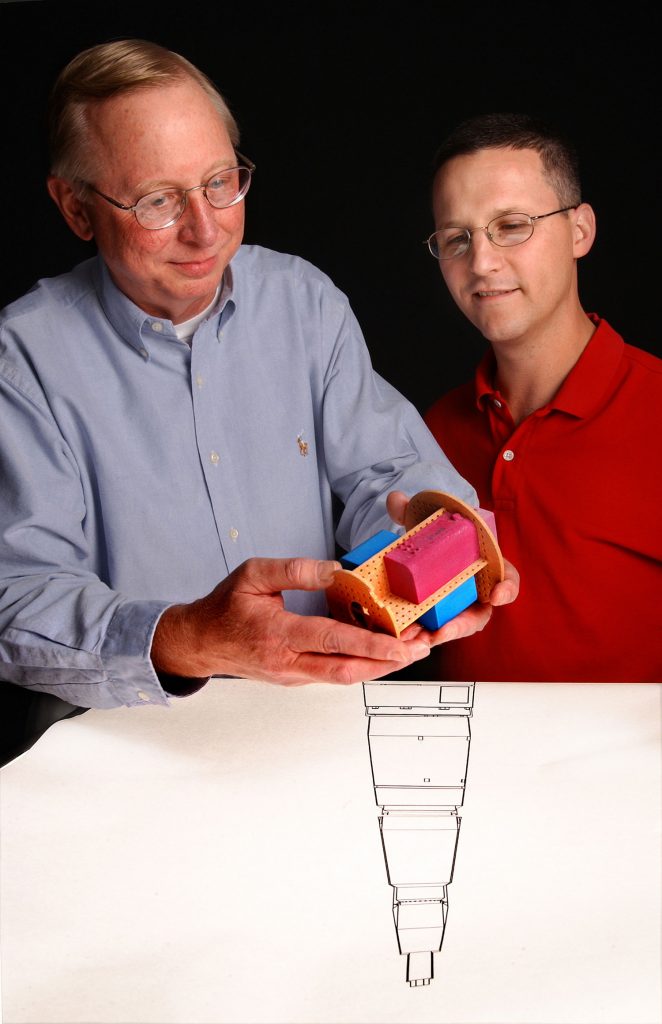
ALBUQUERQUE, N.M. — Sandia National Laboratories researchers are assisting with NASA’s HyTEx (Hypersonic Technology Experiment) program to create new mature technologies that will benefit next-generation launch vehicles, a follow-on to the current shuttle.
A part of NASA’s Next Generation Launch Technology program, HyTEx will provide a dedicated, timely, and cost-effective means of advancing the readiness level of vehicle system technologies through flight demonstrations in a relevant reentry environment. Sandia, a Department of Energy laboratory, will develop the HyTEx re-entry system.
The involvement in HyTEx is synergistic with Sandia’s long-range goal of developing advanced technologies and integrated capabilities for hypersonic flight systems applicable to a wide range of military and access-to-space requirements.
David Keese, deputy director for Strike Systems at Sandia, said the NASA HyTEx technology flight demonstration is a perfect fit with Sandia’s goal of helping to create the next generation of hypersonic vehicles. The HyTEx flight is scheduled for May 2005.
“Our most important role in the HyTEx program is to use our integrated hypersonic vehicle design, development, and flight experience to produce a capability to obtain hypersonic flight evaluation of these new technologies,” Keese said.
Hypersonic technologies include a range of technical disciplines that involve high-speed aerodynamic modeling, aerothermal analyses, high-temperature materials, and navigation/guidance/control (NG&C).
Keese said there are four basic design challenges in the HyTEx program. The first is to provide a robust — low-risk and effective — vehicle designed to function as a flying test-bed. Second is to incorporate technology experiments into this test-bed design in a fail-safe approach. Third is to collect and transmit in-flight data from these experiments. And fourth is to adapt the flight vehicle design to a variety of potential booster designs, including a recovery system that will allow post-flight examination of the integrated experiments.
Sandia’s next major steps in the project involve developing detailed plans and organizing Sandia’s resources to produce an actual flight system for the HyTEx proof-of-concept mission, while at the same time making progress in advancing key enabling technologies that will give even greater capabilities to programs like HyTEx in the future.
Mike Macha, HyTEx project manager, said he sees the project as an opportunity for Sandia to have a significant impact on a broad spectrum of emerging U.S. hypersonic technology initiatives.
“There is a resurgent and even urgent interest in developing a new generation of vehicles for rapid, long-range military capability and for reliable, affordable access to space,” Macha said.
Fortunately, Sandia already has a foothold in a wide range of potential hypersonic technology areas — from high-temperature materials for thermal protection systems, to robust non-GPS dependent navigation and guidance methods, to modeling and simulation capabilities for rapid assessment of new vehicle configurations.
“One immediate major challenge is deciding which subset of candidate technology areas to invest in,” Macha said. “During the first year we have gone through a discovery phase that includes understanding the current level of development and the time frame for maturation of these technologies.”
“Sandia’s commitment to an internal hypersonic technology program establishes our credibility as a major player in this field and will lead to opportunities to collaborate in a variety of external programs,” Macha said.
Sandia technical contact: David Keese, dlkeese@sandia.gov , (505) 844-1899